
BY AMELIA MATTHEWS
LONG BEACH, CA - The Yadunandan Center for India Studies at California State University Long Beach held its 14th Annual Uka and Nalini Solanki Foundation Lecture on Apr. 27. Keynote speaker, Prof. Anand Yang transported the audience of close to 300, to experience India and China of the late 19th and...
LONG BEACH, CA - The Yadunandan Center for India Studies at California State University Long Beach held its 14th Annual Uka and Nalini Solanki Foundation Lecture on Apr. 27. Keynote speaker, Prof. Anand Yang transported the audience of close to 300, to experience India and China of the late 19th and...
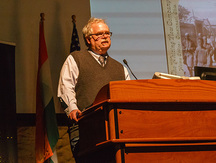
early 20th centuries. Yang, who is Professor of International Studies and History at University of Washington, Seattle, and currently Chair of the History Department was introduced by Dr. Tim Keirn, Director of The Yadunandan Center for India Studies , the moderator for the lecture, as a ‘citizen of the world.’ Born to Chinese parents in Shantineketan, he grew up in New Delhi, finished his schooling in Mexico City and now resides in the US. He is fluent in Mandarin, Hindi and Spanish. Specializing in South Asian History, Yang’s interests have now become more comparative and global, involving India, China, and other regions of Asia with a focus on the Indian context of world history and the diaspora in the 19th century.
Yang’s enlightening lecture was titled ‘Subaltern Speak: An Indian Soldier’s Travelogue of China, 1900-1901.’ It was based on a book Yang is translating called ‘ Thirteen Months in China,’ written in Hindi by an Indian subaltern, or military officer, who was part of the 7th Rajput regiment of the British Army, which travelled to China to help suppress the Boxer Uprising there in 1900-1901.
A Chinese secret organization, whose members were well trained in the martial arts, called the Boxers, led an uprising in China against the spread of Western imperialism and Japanese influence there.
The original book ‘Chin Mein Teraha Maas’ was written by the subaltern, Thakur Gadadhar Singh and published in Lucknow in 1902. Only 1000 copies were printed. He was one of the greatest and among the first few travel writers in India.
Explaining why he chose to translate this book, Yang said he had always been intrigued by the cosmopolitan knowledge of the rank and file of people living in the countryside in India during the 18th and 19th centuries. There were soldiers, convicts, slaves, indentured laborers who left the shores of India to travel to other lands. Getting to know their impressions, especially about China , was what egged him on the challenges of translating the Sanksritized Hindi the book was written in.
Gadadhar Singh’s intention in writing the book was to share information on China, on the war against the Boxers and the victory of the soldiers. In doing so, he opened the window to another world showing that the vernacular cosmopolitan understanding of the world was sophisticated , beyond the village and town they lived in. Gadadhar Singh acted as a bridge between two civilizations.
Gadadhar Singh was part of the 3,000 strong British contingent which was part of the 20,000 strong 8-Nation Alliance deployed to China to suppress the Boxer uprising there. His first impression of China was one of compassion. He mentions in his book that “…even hearts of stone would have melted because all I saw was men who looked like sticks.” He then went on to provide a deposition of atrocities committed by the civilized world on the barbaric one. He felt a certain kinship to China because China was to undergo what India was already undergoing. He used the metaphor ‘shikar’ very often saying that Europe and Japan are hunting down and preying upon China like ‘shikar.’ He lamented the rampant rape of women.
‘Kale log’ (all Asians) have been marginalized and mistreated by ‘Gore log’ (Westerners), he highlighted.
The Boxers, he said, have ‘shakti’ supernatural abilities, but they don’t have enough guns and fire power to resist the lions (British).
Seeing the poor state of China, he opined that if China succumbed to the British they may be better off. He however , presented a solution in the form of China and India coming together to form one great united power and strongly underscored this Pan Asian sentiment, seeing it as a silver lining to the downfall of China.
The book ends with a comparison of the strengths and weaknesses of India and China. The most fertile and oldest civilizations of Asia were straddled with many weaknesses like corrupt officials, large populations, wasteful spending, female illiteracy, opium smoking, foreign goods and false gods. Though the book is a lament of sorts, unmasking the hypocrisy of Western civilization, it also embodies his radical vision in uniting India and China into the greatest country in the world - ‘Chindia.’ Yang concluded, today Gadadhar Singh’s dream has partly come true with both India and China being powers to contend with in Asia.
A lively Q& A session followed.
In appreciation, Yang was presented a book on Mahatma Gandhi by Uka Solanki.
Dean of College of Liberal Arts David Wallace thanked the Solanki Family for their generosity, which enables the university each year to bring a distinguished speaker and hold an intellectually stimulating event. He also thanked Dr Tim Keirn for doing a great job of putting the event together. Dr Keirn, thanking the Solankis and all those who helped make the event a success, also gave an update on the summer workshops on India for local schoolteachers here, and the one held in Maryland which is gaining in popularity and has a long wait list. Uka and Nalini Solanki established the Yadunandan Center for India Studies in 2005. The endowment helped establish the Lecture Series. (Photo credit: Debbie Hildreth Pisarcik)
Yang’s enlightening lecture was titled ‘Subaltern Speak: An Indian Soldier’s Travelogue of China, 1900-1901.’ It was based on a book Yang is translating called ‘ Thirteen Months in China,’ written in Hindi by an Indian subaltern, or military officer, who was part of the 7th Rajput regiment of the British Army, which travelled to China to help suppress the Boxer Uprising there in 1900-1901.
A Chinese secret organization, whose members were well trained in the martial arts, called the Boxers, led an uprising in China against the spread of Western imperialism and Japanese influence there.
The original book ‘Chin Mein Teraha Maas’ was written by the subaltern, Thakur Gadadhar Singh and published in Lucknow in 1902. Only 1000 copies were printed. He was one of the greatest and among the first few travel writers in India.
Explaining why he chose to translate this book, Yang said he had always been intrigued by the cosmopolitan knowledge of the rank and file of people living in the countryside in India during the 18th and 19th centuries. There were soldiers, convicts, slaves, indentured laborers who left the shores of India to travel to other lands. Getting to know their impressions, especially about China , was what egged him on the challenges of translating the Sanksritized Hindi the book was written in.
Gadadhar Singh’s intention in writing the book was to share information on China, on the war against the Boxers and the victory of the soldiers. In doing so, he opened the window to another world showing that the vernacular cosmopolitan understanding of the world was sophisticated , beyond the village and town they lived in. Gadadhar Singh acted as a bridge between two civilizations.
Gadadhar Singh was part of the 3,000 strong British contingent which was part of the 20,000 strong 8-Nation Alliance deployed to China to suppress the Boxer uprising there. His first impression of China was one of compassion. He mentions in his book that “…even hearts of stone would have melted because all I saw was men who looked like sticks.” He then went on to provide a deposition of atrocities committed by the civilized world on the barbaric one. He felt a certain kinship to China because China was to undergo what India was already undergoing. He used the metaphor ‘shikar’ very often saying that Europe and Japan are hunting down and preying upon China like ‘shikar.’ He lamented the rampant rape of women.
‘Kale log’ (all Asians) have been marginalized and mistreated by ‘Gore log’ (Westerners), he highlighted.
The Boxers, he said, have ‘shakti’ supernatural abilities, but they don’t have enough guns and fire power to resist the lions (British).
Seeing the poor state of China, he opined that if China succumbed to the British they may be better off. He however , presented a solution in the form of China and India coming together to form one great united power and strongly underscored this Pan Asian sentiment, seeing it as a silver lining to the downfall of China.
The book ends with a comparison of the strengths and weaknesses of India and China. The most fertile and oldest civilizations of Asia were straddled with many weaknesses like corrupt officials, large populations, wasteful spending, female illiteracy, opium smoking, foreign goods and false gods. Though the book is a lament of sorts, unmasking the hypocrisy of Western civilization, it also embodies his radical vision in uniting India and China into the greatest country in the world - ‘Chindia.’ Yang concluded, today Gadadhar Singh’s dream has partly come true with both India and China being powers to contend with in Asia.
A lively Q& A session followed.
In appreciation, Yang was presented a book on Mahatma Gandhi by Uka Solanki.
Dean of College of Liberal Arts David Wallace thanked the Solanki Family for their generosity, which enables the university each year to bring a distinguished speaker and hold an intellectually stimulating event. He also thanked Dr Tim Keirn for doing a great job of putting the event together. Dr Keirn, thanking the Solankis and all those who helped make the event a success, also gave an update on the summer workshops on India for local schoolteachers here, and the one held in Maryland which is gaining in popularity and has a long wait list. Uka and Nalini Solanki established the Yadunandan Center for India Studies in 2005. The endowment helped establish the Lecture Series. (Photo credit: Debbie Hildreth Pisarcik)

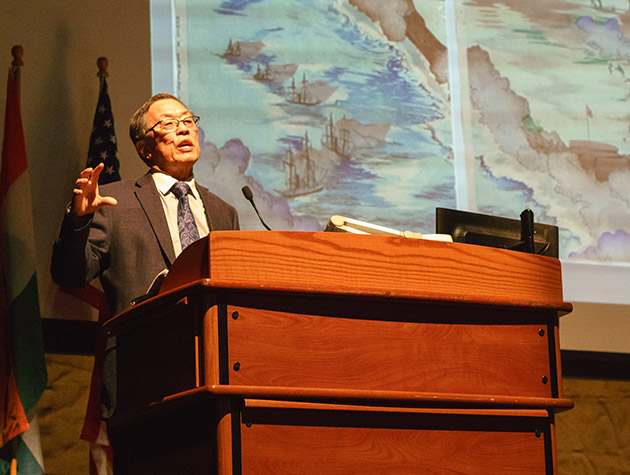
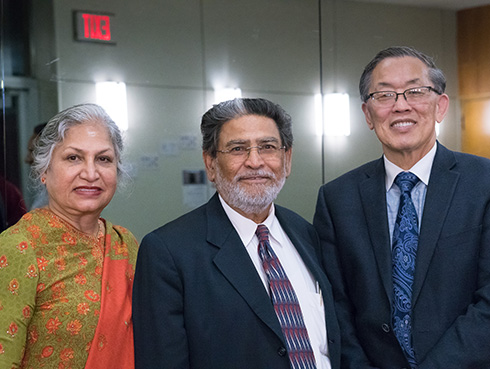
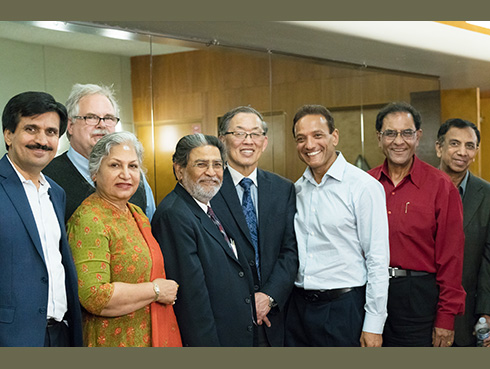
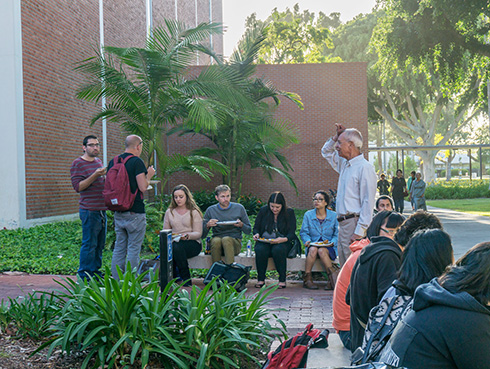
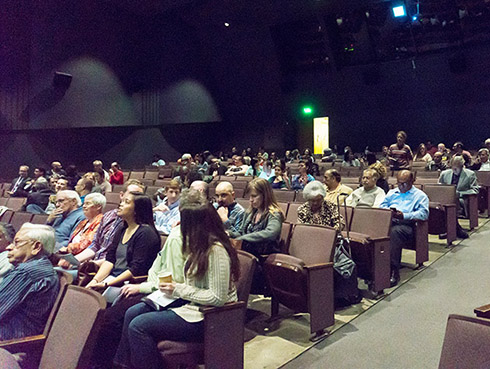
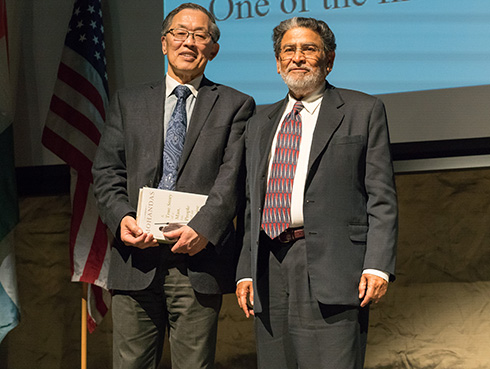
 RSS Feed
RSS Feed
